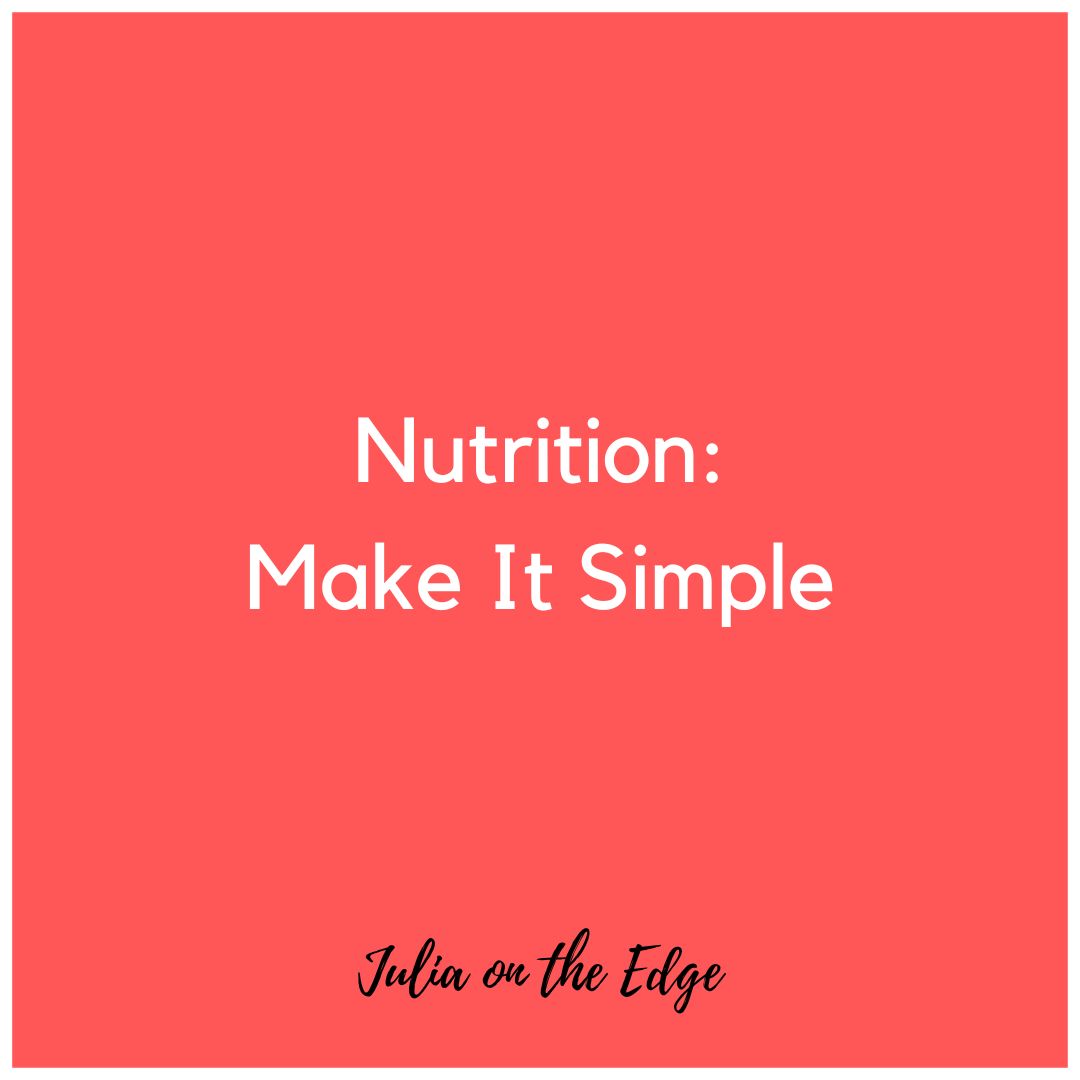Nutrition information is everywhere we look. Someone always has a new diet, supplements, or theory on what we should and should not be eating. Parents start to feel guilty if their child isn’t eating organic everything or if they have any sugar at all. Kids can be selective about what they eat causing the dilemma of what to feed them even more complicated. Now lets add in rising food costs and it’s enough to make you not even want to try to make changes. Is there any way for nutrition to be easy and affordable? Let’s simplify this.
Diet–this word simply refers to the mix of foods that you eat. You can have a keto diet, a Paleo diet, a Mediterranean diet, or a typical American diet just to name a few. When the noun “diet” gets used as a verb is where we start to have problems. No one needs to be “dieting.” Sure, your diet can be varying degrees of healthy. What we want to do is tip that mix of foods towards more healthy options and include fewer high sugar/salt/fat options.
There is a place for all foods. No food is 100% off-limits unless there is a medical need such as an allergy. If you have an allergy to a food, by all means, do not include that in the mix of foods that you eat! This goes for Celiac Disease as well. Eating foods containing gluten can actually be harmful which is more than just making you feel sick after eating it. When we start to make foods “forbidden,” we are setting ourselves and our children up for cravings and binge eating as well as a general problematic relationship with food. Now, saying that there is a place for all foods doesn’t mean that all foods can or should be eaten every day. Some should be. Others should be every once in a while.
Now that we have those caveats out of the way, let’s build a meal.
Five fruits and vegetables every day. This is where we start. This can mean 3 veggies and 2 fruits or some combination of this. Doctors and dieticians would generally like to see you eating more veggies than fruits. If you are truly getting in five servings every day you are going to feel less like snacking because you will be getting a great deal of fiber which helps you feel full longer.
Protein should be at every meal and snack paired with a healthy carbohydrate. We will talk more about carbs in the next paragraph. Dairy products have protein as do nuts, eggs, beans, and obviously meat and fish.
Carbohydrates are one of the three macronutrients along with protein and fat. When we talk about carbs, we are often talking about grain foods like bread, cereals, and pasta. Carbs are also found in fruits, vegetables and dairy. Our bodies have to have carbs to live. If you are trying to eat “low-carb” chances are you are really wanting to eat fewer grain foods. Be sure you are getting adequate whole grains which contain beneficial B vitamins and fiber. Some vegetables contain more starchy natural sugars such as potatoes and sweet corn. If you are preparing a meal, starchy veggies can fill in for grains part of the time.
Healthy fats are our friends. Similar to carbohydrates, our bodies need certain amounts and kinds of fats. These fats can help with heart health as well as hormone production. Healthy fats are found in nuts and seeds, avocados, olives, and fish as well as a few other sources. Be careful about purchasing “low-fat” foods as they likely have added sugar or salt to make them taste better since the fat was removed.
Finally, let’s talk dairy. There is a lot of talk surrounding dairy and whether or not it is good for you. My opinion on it is influenced by the dieticians I have worked with over the years who tout the many good qualities of milk—calcium, protein, and Vitamin D. People with lactose intolerance can take a special medication to help them digest milk products. If you have an allergy to milk and cannot have cows milk, some of the plant-based beverages can be decent replacements as long as you are watching added sugars, protein amounts, and are taking calcium supplements. I cannot stress the importance of getting enough calcium especially for women as we age and for teenagers building bone.
I realize that these are a lot of words when the point of this post is to make nutrition simple. I could give you the bullet points with no explanation; however, I feel that explanation is warranted because we don’t want to just blindly accept all information that we are given.
To sum it up, here is the take-away.
- Your diet is simply the collection of foods that you eat. Everyone has a diet.
- There is a place for all foods unless you have an allergy to them.
- Eat lots of fruits and veggies.
- Eat protein at every meal and snack.
- Your body needs carbs. Carbs are in more than just grain foods.
- Whole grain foods have beneficial properties.
- Dairy is important. If you can’t have cows milk due to an allergy, find a plant-based alternative similar in protein amounts and with low sugar and take a calcium supplement.
In future posts we will talk more about figuring out what to make for meals, how to shop amid the rising costs of food, and how to change what you are eating to incorporate healthy choices.
Peace from The Edge,
Julia

